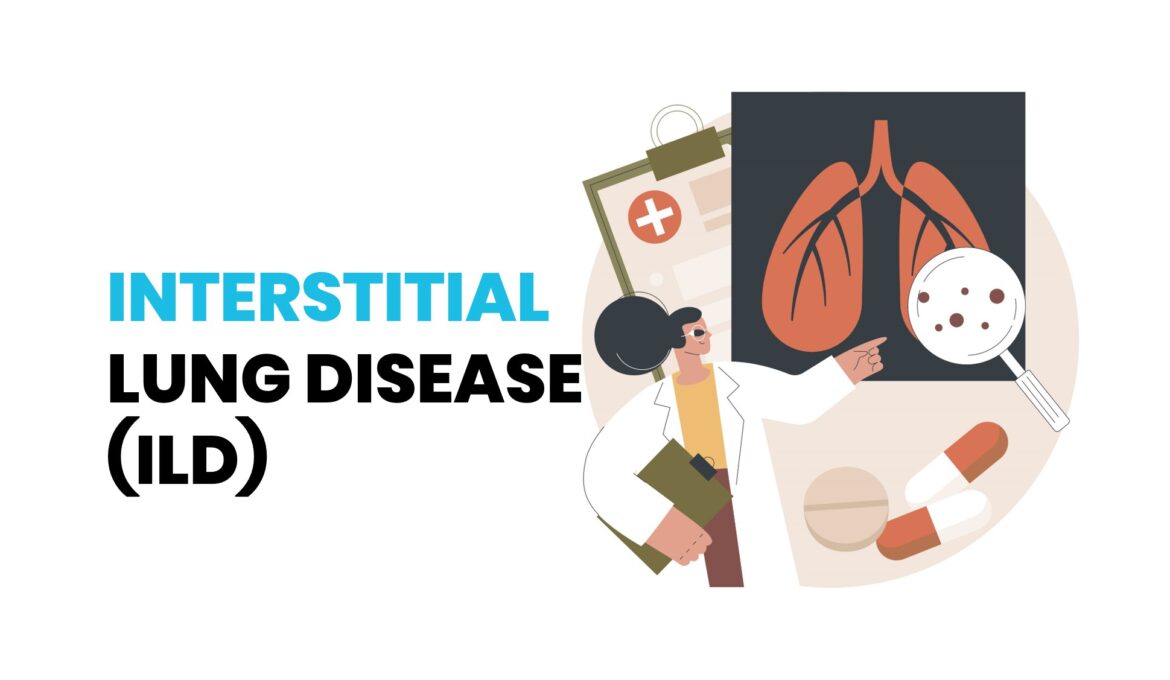
What is Interstitial Lung Disease (ILD)?
Interstitial lung disease (ILD) is an umbrella term used for a large group of diseases that cause scarring (fibrosis) of the lungs which causes stiffness of the lungs which makes it difficult to breathe and get oxygen to the bloodstream. ILDs is often irreversible and gets worse over time.
What are the symptoms of interstitial lung disease?
Shortness of breath
Dry cough
Fatigue
Chest discomfort
What are the causes for my interstitial lung disease?
The causes of ILD can be hard to find. Sometimes ILD is caused by another systemic disease, like rheumatoid arthritis or environment related exposure in your home or at your job. Many times, doctors cannot identify the cause of your ILD. In those cases, we say your ILD is “idiopathic.
What are the ways to diagnose ILD?
To diagnose an ILD, your doctor will probably order a chest X-ray or CT scan to get a better look at your lungs. A lung function test may be used to measure your lung capacity, which would have worsened due ILD. Rarely and in few circumstances more invasive procedures may be needed, such as a bronchoscopy or a lung biopsy for diagnosis of atypical ILD
What are the treatment options for ILD and can it be cured?
Interstitial lung disease (ILD) are usually not reversible. The purpose of interstitial lung disease treatment is usually to:
Slow or stop the progression of the disease
Improve quality of life
In some cases, reverse the effects of ILD
The treatment of ILD vary based on the cause and generally it can be classified as:
(i) Lifestyle Changes
Quit Smoking
If you smoke, the most important thing you can do is quit smoking. Your doctor can help you by attending the different smoking cessation programs and medicines to stop the craving for smoking.
If you smoke, the most important thing you can do is quit smoking. Your doctor can help you by attending the different smoking cessation programs and medicines to stop the craving for smoking.
Get Exercise
Physical activity can help to strengthen the muscles used in breathing and improve your overall wellness. Your doctor can help determine what kinds of activity are safe for you.
Physical activity can help to strengthen the muscles used in breathing and improve your overall wellness. Your doctor can help determine what kinds of activity are safe for you.
Pulmonary Rehabilitation
Pulmonary rehabilitation is an important component of the ILD treatment, which encompasses a variety of methods designed to improve the well-being of people with chronic breathing problems. Rehab may include an exercise program, training in managing ILD, nutritional counselling and psychological counselling.
Pulmonary rehabilitation is an important component of the ILD treatment, which encompasses a variety of methods designed to improve the well-being of people with chronic breathing problems. Rehab may include an exercise program, training in managing ILD, nutritional counselling and psychological counselling.
(ii) Oxygen Therapy
Oxygen therapy can help people with interstitial lung disease who have low levels of oxygen in their blood to breathe better.
Oxygen therapy does not stop the damage to the lungs associated with ILD, but it does have several benefits, including:
Making it easier to breathe and exercise
Preventing or reducing the complications that can arise with low blood oxygen levels
Reducing the blood pressure in the right side of the heart
Improving sleep and general quality of life
(iii) Medications
Inhaled or oral corticosteroid medications — can reduce the immune system activity that causes scarring and inflammation in the lungs in some forms of ILD.
Antibiotics — respiratory infections can worsen ILD. Antibiotics treat these infections.
Disease-specific therapies — such as medicines specifically for pulmonary fibrosis.
Immunomodulators — therapies that alter the way the immune system functions.
(iv) Lung Transplant
Lung transplant is reserved for treating patients with severe ILD who do not have other treatment options.
Lung transplants can significantly improve lung function and quality of life, but involve risk of infection and rejection of the transplanted lung.


